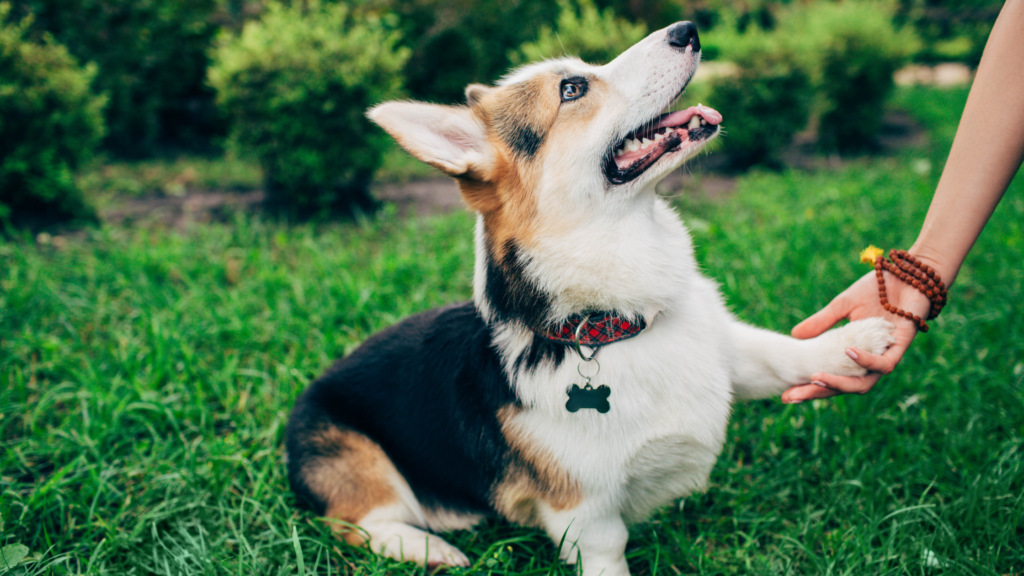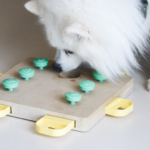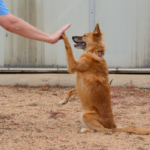Can Dogs Get Seasonal Allergies? Recognizing and Managing Canine Hay Fever
If you’ve ever noticed your furry friend constantly scratching, sneezing, or having red and itchy skin during certain times of the year, you may be wondering, “Can dogs get seasonal allergies?” The answer is yes! Just like humans, dogs can develop allergic reactions to pollen, mold, dust mites, and other environmental allergens. These allergies, also known as canine hay fever, can cause discomfort and affect your dog’s overall well-being. In this article, we’ll explore how to recognize the signs of seasonal allergies in dogs and provide some tips on managing and relieving their symptoms.

Can Dogs Get Seasonal Allergies?
With the changing of seasons come a wide range of allergies that affect not just humans, but our beloved furry friends as well. Yes, dogs can indeed get seasonal allergies, also known as hay fever or canine allergic rhinitis. Just like us, their immune systems can overreact to certain allergens in the environment, leading to uncomfortable symptoms. It’s important for dog owners to be aware of the signs and causes of seasonal allergies in dogs, as well as how to recognize and manage them effectively.
Did You Know?
Dogs may mirror their owner’s hand preference, influencing their own paw preference.
Savvy TIP !
Observe your dog’s preferred paw during play; tailor activities to enhance their natural inclinations for a joyful experience.
Common symptoms of seasonal allergies in dogs
If you notice your dog scratching excessively, having red and watery eyes, or constantly sneezing during specific times of the year, it’s highly likely that they are suffering from seasonal allergies. Other common symptoms include a runny nose, coughing, ear infections, and even skin irritations like rashes or hot spots. The severity of these symptoms can vary from dog to dog, and it’s important to pay close attention to any changes in your furry friend’s behavior or appearance.
Savvy TIP !
Rotate toys and activities to engage both paws, promoting balanced development and preventing over reliance on a single paw preference.
Savvy TIP !
Rotate different toys regularly to keep their interest and prevent boredom.

Causes of seasonal allergies in dogs
Seasonal allergies in dogs are usually triggered by environmental factors such as pollen, grass, mold, or dust mites. As the seasons change, different allergens become more prevalent, leading to an uptick in allergic reactions. Dogs can also develop allergies to certain foods, but this is not considered seasonal allergies. It’s important to note that just like humans, dogs can develop allergies at any age, even if they haven’t shown any previous signs of allergies.
Setting regular times for walks and play sessions is equally important. Dogs appreciate consistency and knowing what to expect.
Whether it’s a morning walk before breakfast or an evening play session after dinner, try to maintain a regular schedule.
This helps ensure your dog gets the exercise they need and allows you to create a bond through shared activities.
Dogs leave paw prints on our hearts.
Unknown
Recognizing Canine Hay Fever
Recent studies have revealed that there may be a genetic component to canine handedness. Certain breeds are more likely to exhibit a strong paw preference, indicating a possible genetic influence. While the exact genetics behind this phenomenon are still being unraveled, it is clear that genes play a role in shaping a dog’s paw preference.
Understanding your dog’s genetic predispositions is crucial. Explore tips to navigate paw preferences influenced by genetic factors.
Feeding your dog a balanced and nutritious diet is essential. Look for high-quality commercial dog foods that have the necessary nutrients and avoid those with artificial additives or fillers. You can also consider homemade meals or a combination of commercial and homemade food, but ensure they meet your dog’s nutritional requirements.

Development Factors
The development of a dog’s paw preference begins early in life. Puppies start exploring their surroundings using their paws and gradually develop a preference for one paw over the other. The environment and experiences during this critical period can also shape their paw preference. For example, if a puppy consistently receives treats or rewards using a specific paw, they may develop a stronger preference for that paw.
Early puppyhood lays the foundation for paw preferences. Explore tips to foster balanced development during these critical developmental stages.
Savvy TIP !
Consider placing the bed in a quiet, draft-free location away from excessive noise.
Savvy TIP !
Avoid leaving your dog outside for extended periods in extreme weather conditions.
Providing appropriate shelter is crucial, especially if your dog spends a significant amount of time outside:
Behavioral factors
Behavioral factors also contribute to a dog’s paw preference. Dogs are intelligent creatures and can adapt their behavior based on the circumstances. If a certain paw provides more dexterity or control in certain activities, such as grabbing a ball or digging a hole, dogs may naturally prefer to use that paw. Additionally, dogs may mirror their owners’ predominant hand, further influencing their paw preference.
Dogs are wise. They crawl away into a quiet corner and lick their wounds and do not rejoin the world until they are whole once more.
Agatha Christie
The adaptability of dogs is showcased in their behavioral factors influencing paw preference. If a particular paw offers more dexterity or control in certain activities, dogs naturally lean towards using that paw. Moreover, dogs may mirror the predominant hand of their owners, further shaping their paw preference.

Gender Differences
Adding an intriguing layer to the exploration of canine handedness are gender differences. Studies hint at male dogs exhibiting a more pronounced paw preference compared to females. While the reasons behind this gender disparity are not fully elucidated, it introduces an interesting dynamic to the study of paw preference in dogs.
Cultural Influences on Paw Preference
Beyond genetics and behavior, cultural influences can impact a dog’s paw preference. In certain societies, specific breeds may be trained or encouraged to use a particular paw for tasks. This cultural conditioning can contribute to the prevalence of paw preferences within specific groups of dogs.
Impact of Paw Preference
Understanding a dog’s paw preference transcends mere curiosity; it holds implications for behavior, performance, training, and daily activities. The influence is particularly evident in competitive dog sports like agility or obedience trials.

Feeding your dog a balanced and nutritious diet is essential. Look for high-quality commercial dog foods that have the necessary nutrients and avoid those with artificial additives or fillers. You can also consider homemade meals or a combination of commercial and homemade food, but ensure they meet your dog’s nutritional requirements.
Influence on Behavior and Performance
Canine handedness significantly shapes behavior and performance, especially in activities demanding precision. In competitive sports, knowing a dog’s preferred paw guides trainers in tailoring approaches to optimize their potential.
Influence on Behavior and Performance
Recognition of a dog’s paw preference extends into the realm of training and learning. By understanding which paw a dog naturally favors, trainers can design exercises aligning with their strengths, resulting in more effective and efficient sessions.
Influence on Physical Activities
In everyday life, a dog’s paw preference comes into play during various physical activities. From playing fetch to scratching an itch, being aware of your dog’s preferred paw adds understanding to their behavior.
If you notice any changes in your dog's behavior, appetite, or general well-being, address any health concerns promptly. Dogs can't communicate their discomfort or pain verbally, so it's essential to be observant and attentive to any signs of illness. Regular veterinary care and open communication with your veterinarian will help ensure your dog's health needs are met.
Paw Preference in Different Breeds
Dive deeper into the world of canine handedness by exploring how different breeds exhibit paw preferences. Some breeds may showcase a more pronounced preference, adding another layer to appreciating the diversity in canine behavior.
Tailoring Enrichment Activities
Enrichment activities play a crucial role in a dog’s well-being. Tailoring these activities based on a dog’s paw preference can make the experience more enjoyable and engaging.
Paw Preference and Age
As dogs age, their physical abilities and preferences may evolve. Observing changes in a dog’s paw preference over time provides insights into their aging process, ensuring a comfortable and fulfilling life for senior dogs.
Dogs do speak, but only to those who know how to listen.
Orhan Pamuk
In Conclusion
Canine Handedness, often overlooked, is a fascinating aspect that deserves attention. Recognizing and understanding your dog’s paw preference unveils unique insights into their individuality. Whether in behavior, training, or daily activities, a dog’s paw preference plays a significant role. Observe your four-legged companion, discover their favored paw, and unlock the richness of your connection—one paw at a time.









